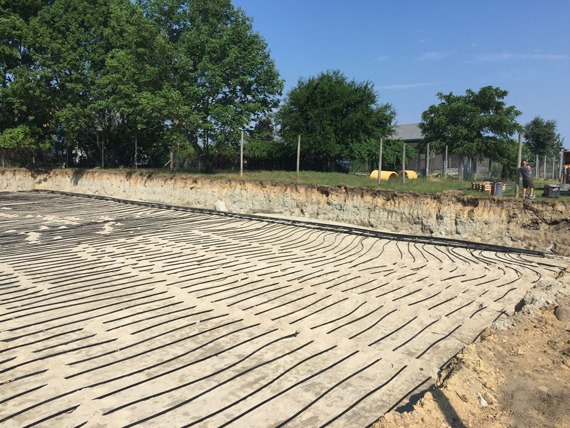

A geothermal test hole (also called a geothermal borehole or test well) is a preliminary vertical hole drilled into the ground to assess conditions for a geothermal energy system—especially for ground source heat pumps or deep geothermal power generation.
Main Purpose:
To evaluate subsurface conditions before installing a full geothermal system. This includes:
Geothermal drilling is the process of drilling into the Earth’s surface to access heat stored underground.
For Heating (Closed-Loop Systems):
Geothermal grouting is the process of injecting a grout material into the borehole surrounding the geothermal loops or casing to improve heat transfer and prevent environmental contamination. The grout helps secure the geothermal pipes in place and enhances the thermal conductivity between the pipes and the surrounding soil or rock, ensuring that the geothermal system performs efficiently.
The primary goal of geothermal grouting is to create an efficient heat exchange between the geothermal pipes and the surrounding ground. The grout fills any gaps between the pipes and the surrounding rock or soil, allowing heat to transfer more effectively from the ground into the system.
Better thermal conductivity means better performance for the geothermal system, ensuring it can extract or dissipate heat as needed.
Geothermal piping refers to the network of pipes used in a geothermal heat pump system to transfer heat between a building and the ground. This piping system forms the "loop" that circulates a heat transfer fluid (usually a water-glycol mixture) through the ground to absorb heat in winter or release heat in summer. Geothermal systems use the consistent temperature of the earth to provide energy-efficient heating and cooling.
The pipes in the loop are filled with a heat transfer fluid (usually a mixture of water and propylene glycol or ethylene glycol) to prevent freezing in cold temperatures and to improve heat transfer. The fluid circulates through the pipes, either absorbing heat from the ground in the winter or releasing heat into the ground in the summer.
Geothermal well testing is the process of evaluating a geothermal well to assess its productivity and performance, ensuring that it can meet the requirements of a geothermal energy system or project. The testing provides crucial data on the well's flow rates, temperature, pressure, and long-term sustainability, helping engineers design systems that are efficient and cost-effective.
A geothermal flush is a maintenance process used in geothermal heating and cooling systems. Geothermal systems rely on a heat pump to transfer heat between a building and the ground via a closed loop of pipes buried underground. Over time, the fluid circulating through the system can become contaminated with debris, scale, or bacteria, which can hinder the system's efficiency and performance. A geothermal flush is designed to clean and flush out these contaminants from the system to restore its efficiency.
The Role of Glycol in Geothermal Systems:
In many geothermal systems, the fluid circulating through the pipes is a mixture of water and glycol. Glycol is used in these systems for several important reasons:


